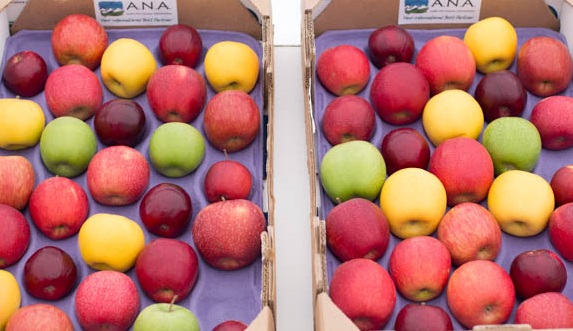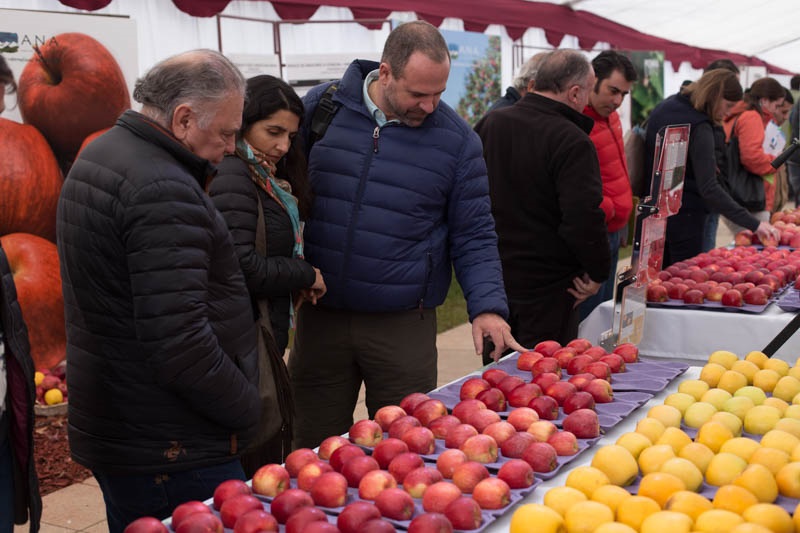Pomaexpo showcases new apple varieties in Chile

On a cold and cloudy day on May 30, the fifth edition of Pomaexpo brightened up people's spirits in the Chilean city of Talca with a colorful array of apple varieties from deep red to intense green, pink and yellow. 
The event, hosted by nursery A.N.A Chile and the University of Talca's Centre for Pome Fruit, brought together sector exports including speeches from Frédéric Bernard and Emmanuel de Lapparent of French group International Fruit Obtention (IFO).
IFO is currently 3.5 years into a 10-year project in Chile with A.N.A, called the 'Associative Apple Breeding Program'.
Bernard told participants the aim of the program was to obtain high-quality cultivars that were suited to the climatic conditions of Chile's production regions.
The work involves IFO conducting crosses and sending seeds to be planted and selected in Chile, with the end goal of finding varieties with appropriate commercial characteristics.
Initiatives like this seek to raise apple's status from what IQonsulting executive director Isabel Quiroz described as "commodity".
"A slight reduction in exports is expected but with changes in supply toward a fruit of better quality, and that's what we're all seeing in the market and asking for," Quiroz said.
"This direction is where we need to lead new plantings of export apples.
"Competing with quality is the minium. You can't try to obtain attractive prices for the grower and exporter if we send apples of low quality."
She added there was also moderate growth for apples in the Pink Lady group of varieites, as well as growth in other clubs including bi-colored fruit and from the Honeycrisp group.
Antonio Walker, president of the Maule region fruit grower group Fruséptima, also told Fresh Fruit Portal some details about the current Chilean season underway.
"We just finished the harvest in the Maule region, a harvest that started in February and finished on MAy 21. We had a tough run with rains in May so the harvest was delayed by four or five days," he said.
"The characteristic in terms of production was that we had a bit less than we expected. We are saying Chile will produce 10-12% less than last year, which is a surprise.
He said there was less color in the fruit as well, with the exception of Pink Lady.
"We had problems in new varieties like Ambrosia and some Fujis. Having less color meant that we had less performance for export," he said.
However, in general terms he said quality was good and now the industry was waiting to see how the fruit performs in the international market.


















































